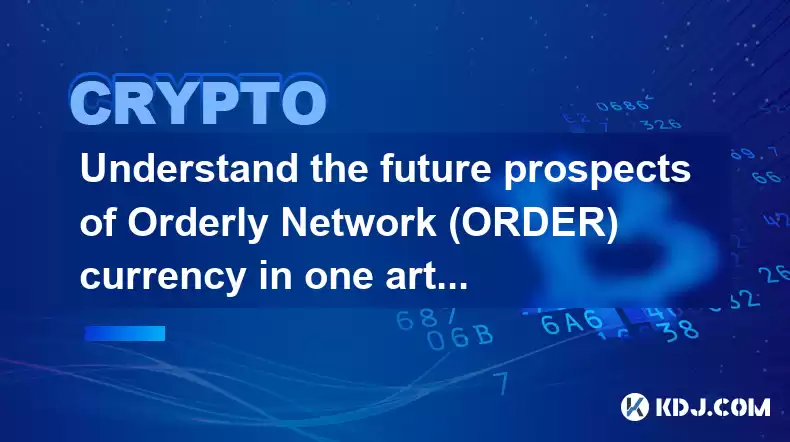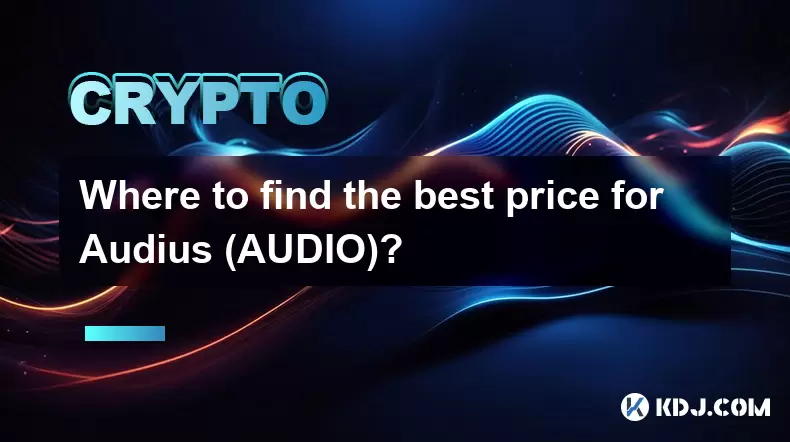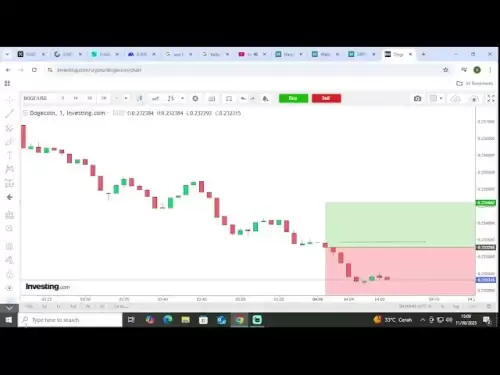-
 Bitcoin
Bitcoin $120300
1.41% -
 Ethereum
Ethereum $4296
2.75% -
 XRP
XRP $3.220
1.46% -
 Tether USDt
Tether USDt $0.9997
-0.04% -
 BNB
BNB $801.6
0.14% -
 Solana
Solana $179.9
0.22% -
 USDC
USDC $0.9998
-0.01% -
 Dogecoin
Dogecoin $0.2302
-0.24% -
 TRON
TRON $0.3405
-0.39% -
 Cardano
Cardano $0.7965
0.53% -
 Hyperliquid
Hyperliquid $44.80
2.57% -
 Chainlink
Chainlink $21.95
2.94% -
 Stellar
Stellar $0.4438
1.68% -
 Sui
Sui $3.767
-1.42% -
 Bitcoin Cash
Bitcoin Cash $584.4
3.24% -
 Hedera
Hedera $0.2554
-0.59% -
 Ethena USDe
Ethena USDe $1.001
-0.02% -
 Avalanche
Avalanche $23.57
0.00% -
 Litecoin
Litecoin $126.6
4.64% -
 Toncoin
Toncoin $3.339
0.94% -
 UNUS SED LEO
UNUS SED LEO $9.001
-0.49% -
 Shiba Inu
Shiba Inu $0.00001320
-0.92% -
 Uniswap
Uniswap $10.84
3.36% -
 Polkadot
Polkadot $3.945
-1.39% -
 Cronos
Cronos $0.1663
4.77% -
 Ethena
Ethena $0.8136
8.48% -
 Dai
Dai $0.0000
0.00% -
 Bitget Token
Bitget Token $4.391
-0.51% -
 Monero
Monero $268.0
0.80% -
 Pepe
Pepe $0.00001169
-1.57%
Understand the future prospects of Orderly Network (ORDER) currency in one article
Orderly Network's token value is influenced by crypto market sentiment, adoption, competition, regulations, and global economic conditions, as analyzed through technical indicators like support/resistance levels, moving averages, and RSI.
Jan 01, 2025 at 10:37 am

Key Points:
- Overview of Orderly Network (ORDER)
- Analysis of Market Factors Influencing ORDER Value
- Technical Analysis and Price Predictions
- Use Cases and Partnerships Driving ORDER Adoption
- Key Competitors and Market Share Analysis
- Potential Risks and Uncertainties Associated with ORDER
- FAQs on Orderly Network (ORDER)
Overview of Orderly Network (ORDER)
Orderly Network (ORDER) is a decentralized platform that connects market makers, liquidity providers, and traders. It aims to improve the efficiency and transparency of cryptocurrency markets by providing a unified platform for order execution and settlement. ORDER tokens are used for various purposes within the ecosystem, including staking, transaction fees, and governance.
Analysis of Market Factors Influencing ORDER Value
Several market factors influence the value of ORDER tokens:
- Cryptocurrency Market Sentiment: Positive market sentiment tends to drive up the demand for all cryptocurrencies, including ORDER.
- Adoption: The adoption of Orderly Network by market makers, liquidity providers, and traders increases the utility and demand for ORDER tokens.
- Competition: Orderly Network faces competition from other decentralized trading platforms, which could impact its market share and token value.
- Regulatory Landscape: Regulations related to cryptocurrency exchanges could affect the operations and growth of Orderly Network and the value of ORDER tokens.
- Global Economic Conditions: Economic downturns can impact the overall demand for cryptocurrencies, including ORDER.
Technical Analysis and Price Predictions
Technical analysis of ORDER token charts suggests:
- Support and Resistance Levels: Significant support and resistance levels exist at key price points, and traders often react to these levels.
- Moving Averages: Long-term moving averages provide insights into overall market trend, and a breakout above or below these averages can indicate a change in momentum.
- Relative Strength Index (RSI): RSI measures the strength of price fluctuations and helps identify potential overbought or oversold conditions.
Based on these technical indicators, price predictions vary. However, some analysts suggest that ORDER has strong potential for growth in the long term.
Use Cases and Partnerships Driving ORDER Adoption
Several use cases and partnerships drive the adoption of ORDER tokens:
- Market Making: Market makers utilize Orderly Network's tools to provide liquidity and earn fees.
- Automated Trading: Traders can develop automated trading strategies using the Orderly Network API.
- Governance: ORDER token holders participate in governance decisions shaping the platform's development.
- Partnerships with Exchanges and Wallets: Integrations with reputable exchanges and wallets make ORDER more accessible to users.
Key Competitors and Market Share Analysis
Orderly Network competes with other decentralized trading platforms such as:
- Uniswap: A leading decentralized exchange known for its deep liquidity.
- SushiSwap: Another popular decentralized exchange with a focus on yield farming.
- PancakeSwap: A decentralized exchange on the Binance Smart Chain with a large user base.
Orderly Network's market share varies depending on the metric used, such as trading volume or user count. It is actively working to expand its market share through partnerships, community growth, and product development.
Potential Risks and Uncertainties Associated with ORDER
While ORDER has potential growth prospects, there are also potential risks:
- Operational Risks: The platform's operations are subject to technological and human errors.
- Regulatory Uncertainty: The evolving regulatory landscape for cryptocurrencies could impact Orderly Network's operations.
- Competition: Increased competition from other decentralized trading platforms could limit Orderly Network's growth.
- Market Volatility: Cryptocurrency markets are highly volatile, which can impact the value of ORDER tokens.
- Technological Risks: Successful cyberattacks or technical glitches could disrupt Orderly Network's services.
FAQs on Orderly Network (ORDER)
- What is Orderly Network?
Orderly Network is a decentralized platform connecting market makers, liquidity providers, and traders to improve the efficiency and transparency of cryptocurrency markets.
- What is the purpose of ORDER tokens?
ORDER tokens are used for staking, transaction fees, and governance within the Orderly Network ecosystem.
- Who are the key competitors of Orderly Network?
Key competitors include Uniswap, SushiSwap, and PancakeSwap.
- What is the outlook for the future of Orderly Network?
The future of Orderly Network depends on factors such as market adoption, competition, and regulatory developments. It has strong potential for growth if it can successfully execute its plans.
Disclaimer:info@kdj.com
The information provided is not trading advice. kdj.com does not assume any responsibility for any investments made based on the information provided in this article. Cryptocurrencies are highly volatile and it is highly recommended that you invest with caution after thorough research!
If you believe that the content used on this website infringes your copyright, please contact us immediately (info@kdj.com) and we will delete it promptly.
- DYDX Price Stays Afloat: Navigating Neutral Momentum with Technical Indicators
- 2025-08-11 20:50:12
- Superman Takes Flight: A Deep Dive into the Comic Program and Coin Medals
- 2025-08-11 20:30:12
- JasmyCoin's Bullish Momentum: Riding the Daily Gain Wave
- 2025-08-11 21:10:12
- Shiba Inu's Comeback Trail and the Meme Coin Mania: Can $SHIB Deliver a 12,000x Return?
- 2025-08-11 18:30:11
- Proof of Trust, Transparency, and User Safety: Keeping Crypto Real
- 2025-08-11 18:50:12
- Pudgy Penguins, Bitcoin Penguins, and the $22M Meme Coin Mania: A New York Perspective
- 2025-08-11 17:10:11
Related knowledge

How to purchase Aragon (ANT)?
Aug 09,2025 at 11:56pm
Understanding Aragon (ANT) and Its PurposeAragon (ANT) is a decentralized governance token that powers the Aragon Network, a platform built on the Eth...

Where to trade Band Protocol (BAND)?
Aug 10,2025 at 11:36pm
Understanding the Role of Private Keys in Cryptocurrency WalletsIn the world of cryptocurrency, a private key is one of the most critical components o...

What is the most secure way to buy Ocean Protocol (OCEAN)?
Aug 10,2025 at 01:01pm
Understanding Ocean Protocol (OCEAN) and Its EcosystemOcean Protocol (OCEAN) is a decentralized data exchange platform built on blockchain technology,...

Where can I buy UMA (UMA)?
Aug 07,2025 at 06:42pm
Understanding UMA and Its Role in Decentralized FinanceUMA (Universal Market Access) is an Ethereum-based decentralized finance (DeFi) protocol design...

How to buy Storj (STORJ) tokens?
Aug 09,2025 at 07:28am
Understanding Storj (STORJ) and Its Role in Decentralized StorageStorj is a decentralized cloud storage platform that leverages blockchain technology ...

Where to find the best price for Audius (AUDIO)?
Aug 11,2025 at 04:01pm
Understanding the Basics of Ethereum StakingEthereum staking refers to the process of locking up ETH tokens to support the security and operations of ...

How to purchase Aragon (ANT)?
Aug 09,2025 at 11:56pm
Understanding Aragon (ANT) and Its PurposeAragon (ANT) is a decentralized governance token that powers the Aragon Network, a platform built on the Eth...

Where to trade Band Protocol (BAND)?
Aug 10,2025 at 11:36pm
Understanding the Role of Private Keys in Cryptocurrency WalletsIn the world of cryptocurrency, a private key is one of the most critical components o...

What is the most secure way to buy Ocean Protocol (OCEAN)?
Aug 10,2025 at 01:01pm
Understanding Ocean Protocol (OCEAN) and Its EcosystemOcean Protocol (OCEAN) is a decentralized data exchange platform built on blockchain technology,...

Where can I buy UMA (UMA)?
Aug 07,2025 at 06:42pm
Understanding UMA and Its Role in Decentralized FinanceUMA (Universal Market Access) is an Ethereum-based decentralized finance (DeFi) protocol design...

How to buy Storj (STORJ) tokens?
Aug 09,2025 at 07:28am
Understanding Storj (STORJ) and Its Role in Decentralized StorageStorj is a decentralized cloud storage platform that leverages blockchain technology ...

Where to find the best price for Audius (AUDIO)?
Aug 11,2025 at 04:01pm
Understanding the Basics of Ethereum StakingEthereum staking refers to the process of locking up ETH tokens to support the security and operations of ...
See all articles

























































































